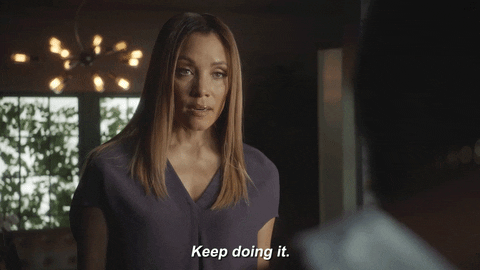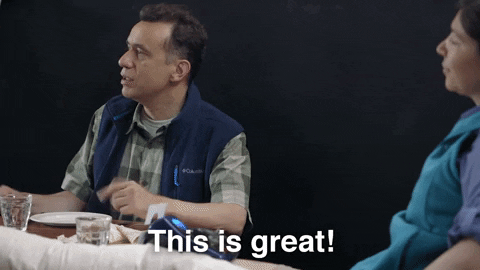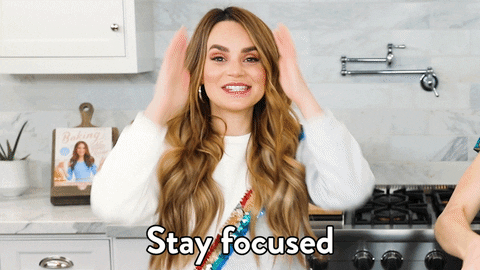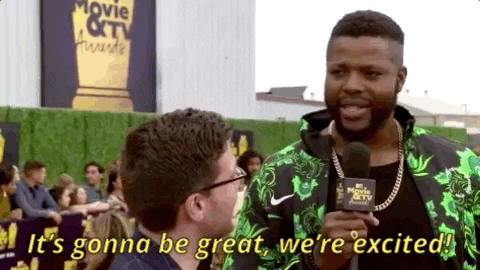More and more of the world is moving online, and college orientation is no exception.
Institutions are quickly taking their usual in-person orientation models and scrambling to find ways to orient new students virtually.
And it is one thing to simply create a virtual orientation. It is another thing to successfully orient students to university life using an online format.

In order to help you and your team get started, here are six tips for making your virtual orientation an engaging and impactful experience for every student.
6 Tips
1. Name the objective
Starting out with your goal in mind is key to any educational endeavor. If you were developing an in-person orientation, you would start by listing the objectives you are trying to accomplish. So, when moving to a virtual orientation, it should be no different.

One common inclination for orientation professionals may be to command C + command V. In other words, they may be tempted to copy and paste their plans without considering the implications of the new mode of communication. It is important to recognize some of your goals might shift with the new virtual format.
For example, maybe your objectives for an in-person orientation are to:
- Connect incoming students with current students, staff, and faculty
- Help students register for courses
- Provide key information about various campus departments and services
- Allow students to see their room and residence hall
- Orient families as to how they can support their student(s) in this transition
Now that you are moving online, maybe all of the goals can stay. Or perhaps you reassess and determine that for your virtual orientation, you’ll focus on a select number of objectives, such as registering students for courses. The rest of your in-person orientation objectives can be accomplished in other settings or at a different time.
Or maybe, you add a new objective or two for virtual orientation. For example, perhaps you’ll produce videos to help students complete key steps in the matriculation process, host a virtual get-to-know-your resident-hall-neighbors, or arrange meetings between new students and student organization leaders who usually are at home during the summer.
No matter your strategy, without naming your objectives, creating a virtual orientation will quickly turn into a random set of experiences and videos based more on the technology you use rather than on the goals you are hoping to reach.
2. Understand synchronous vs. asynchronous content
A key to creating engaging content lies in determining which content needs to be synchronous (in which everyone views the content at the same time) and which should be asynchronous (with students consuming the content at their own time and pace).
To determine this, start by listing all of the topics you want to cover, all the tasks that new students will need to complete before their first day of classes, and all the in-person orientation sessions you usually have in your orientation schedule. Then, designate each item as either synchronous or asynchronous content.
Here is my recommendation: If the content requires any action steps, it should be asynchronous. For example, there is no sense in having someone give a live presentation on how to register a vehicle for campus parking when you can create a 3-minute how-to video that students can watch on their own timelines.
On the other hand, livestreaming a Q&A session with residence life on what to bring to campus could be engaging for students to watch. Or a welcome from the institution’s president, which could easily be pre-recorded, might create a more appreciative moment if everyone tunes in together.

The magic of a virtual orientation is that not everyone has to consume the same content at the same time. People can go at their own paces. But on the other side of the coin is that you risk losing the “we are all in this together” mindset.
Determining which content is synchronous and asynchronous is a critical step for ensuring that you are on the right path for creating engaging content.
3. Make the live moments matter
Once you have determined which pieces of content should be live, it may be tempting to simply film the same 30-minute presentation you would ordinarily host in your event center and stream it online. But from my experience, this tactic isn’t very engaging.
Recently, I participated in five zoom calls and watched an hourlong presentation online — all in one day. I was exhausted and bored by the end of it.
It is hard to keep students’ attention during an in-person orientation. When it is online, the challenge doubles. The amount of energy it takes to stay focused and engaged in a virtual orientation is taxing.
So, it is important to think through your live components. Here are a couple tricks and tips to help you out:
- Condense the schedule: If it’s typically a 20-minute in-person presentation, consider cutting it in half. Move the cut half to welcome week, create a how-to video, or send the info out via email.Once you start getting over the 10-minute mark, you can expect people to zone out or head to the fridge to grab a mid-presentation snack. And even though colleagues might push back on this, from my experience, most messages can be given in 8-10 minutes. You just have to work with people to help them determine the meat of their message.
- Create moments for participants to contribute: We have all been on Zoom calls during which we don’t turn on our camera. This is usually because we are finishing up an email, grabbing another cup of coffee, or scrolling through social media. We are present but not engaged.The best thing about moving online is you can open up options for connections. The best live virtual orientation sessions are the ones that encourage participants to fully engage.Have breakout sessions wherein new students turn on their cameras and converse with each other and the speaker. Hold regular Q&A sessions wherein participants can write in their questions via chat. Do text polls wherein participants can react to live questions. Anything you can do to turn one-way communication into two ways will be a win.
- Make memorable moments: If it is going to be live, think through what sort of moments you are trying to create. For each student, the magic is often not in the content; it’s in getting their questions answered, connecting with a peer, or meeting with their advisor before course registration.Moments are what create experiences. And a student’s experience will determine if they get excited about coming to your institution or if they start to question their enrollment decision.
4. Don’t try to cover everything
So we have talked about live content. But if you are moving to virtual orientation, my guess is that not all of your content will be live. Much of what you will offer will be asynchronous content that people can view at their leisure.
One of the most common online orientation methods is the module approach in which students are assigned content sections, which are basically short classes. The students can progress forward at their chosen own paces but must complete all modules before the first day of class.
In theory, this is great. It is easy to document the content and then check to see who has completed what.
But from my experience, there is a huge downside, which was highlighted for me when three students sat in my office last semester completing a mandatory module — while streaming shows on Netflix.
And while, yes, there are quizzes you can insert into your modules to check that students are actually processing and learning the presented information. However, from my experience, this approach turns a module into a check-the-box challenge rather than a transformative, engaging experience.
So if not the module method, then what?
My thought is to make a list of the top 10 things students need to complete in order to start classes, and then create a how-to video for each.
Your temptation might be to make orientation address everything. But that would be overwhelming. A first-year student doesn’t need to know all of the ins-and-outs of the senior capstone class or how to order their cap and gown. Yes, this information is helpful, but the timing is off. Considering not just the what, but also the when, is a key for communicating timely information that’ll stick.
Embrace the “everything is overwhelming” mantra. Use orientation as an onboarding to your institution’s culture, a means for connecting, and a space to help students complete key tasks before day one of the semester.
Then, create structures for timely learning throughout the first semester. Otherwise, if everything is presented during orientation, students won’t remember anything.

5. Capitalize on students’ video-making skills
In the last five years, I’ve noticed a pattern within my work. I will spend hours working with my marketing team to develop world-class content that is professional and polished. I will feel excited about it and put it online for students to watch.
Then, some random first-year student will post a 10-minute vlog on how they decorated their room, how they survived Welcome Week, or how they registered for classes. And guess what? This video, created by a student who is unaffiliated with my office, will get more than 10,000 views in a week… whereas my professional video garnered only a thousand views all summer.
So, consider tapping into the vlog world. Instead of spending a tremendous amount of time and energy making your videos super polished and professional, enlist students to use their smartphones and video talents to tell the story in more personalized, familiar ways.
A big part of orientation is about communicating facts, philosophies, and key information. And that is still absolutely doable for virtual orientation.
But another key part of orientation is in helping new students see themselves living life through current students. They can get inspired by room decoration, imagine hanging out in certain buildings, and get excited to have lunch at a popular cafe. The best way to foster this anticipation is to have students tell their stories in the ways they already do best.
To do this, create a list of the key aspects that shape students’ lives at your institution. Then, have your orientation leaders make videos highlighting each of these. And instead of pushing your student leaders to create well-polished professional videos, tell them that you want the videos to be filled with photos and events they’ve already captured on their phones. Show them a couple of vlogs students have already made about your institution and get them rolling in that direction.
In doing so, you’ll help shape the narrative new students are learning in an engaging way that feels natural and fun.
6. Create a summer series
Trying to figure out how to cram your virtual orientation into one or two days? It can be challenging. Try this tactic instead: Host a summer series. Pick a day of the week; let’s say Wednesday. Each Wednesday from June until August, offer a live video conference session focused on a different topic.
Here are some potential titles and subjects:
- Learn about Greek Life
- Q&A with Financial Services
- Meet Your RA
- Prepare for Move-In Day
- How to Connect with Your Academic Advisor
Creating a summer series achieves three things:
- It provides students with continual connections throughout the summer. Instead of only connecting with the institution one day in June, students will have many engagement opportunities.
- It spreads out the content, hopefully allowing folks to re-engage and remember key bits of information.
- It allows you to provide timely information: Instead of giving information in May when it doesn’t need to be complete until late July, you can sync up your summer series with what is happening throughout the onboarding process. If, for example, move-in happens is scheduled for early August, host a virtual session about move-in session the week before. And if students need to order books at the end of July, have a session about ordering books in mid-July.
By timing sessions along with deadlines and events, students will be reminded of what they need to accomplish as the summer moves along.
Creating a virtual orientation can be overwhelming. But I encourage you to see it as an opportunity to increase the ways you connect with and educate new students. And once you go virtual, you’ll add another tool in your toolbox to make your orientation process one to remember!

What are your favorite virtual orientation ideas? We’d love to hear from you at @themoderncampus.

And if you’re looking for some more virtual programming inspiration, check out our 53 ideas here. We’ve also built a COVID-19 resources page just for #SApros like you, and have additional tips on virtual orientation here.





